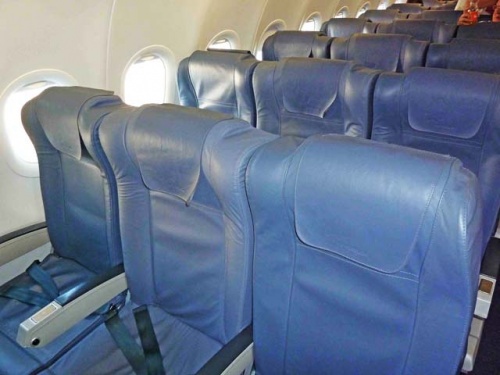Difference between revisions of "Leather weight - Lightweight Leather"
(Created page with "<p align=center> 300px </p> Leder kann sich unterschiedlich schwer anfühlen. Ein dickes Leder ist leichter als ein dünnes Le...") |
|||
| (7 intermediate revisions by one user not shown) | |||
| Line 4: | Line 4: | ||
| − | + | The weight of a leather hide can vary substantially. A [[Thickness of leather|thick leather]] is heavier than a thin leather. [[Oils & fats in the leather industry|Well-oiled leather]] is heavier than a dry leather. A compressed leather is heavier than a very soft leather with loose fibres and many air pockets in the fibre structure. | |
| − | + | For leathers used in transport ([[car leather|vehicles]], [[Aircraft leather|airplanes]]), every gram saved contributes to a lower energy consumption. With 400 grams of weight per square meter of leather, extra light weight leather was developed for this purpose. Also with [[leather clothing]], a lighter weight is more comfortable to wear, especially in thick and warm winter coats or [[Leather suits|motorcycle leather suits]]. | |
| − | + | However, when reducing the leather weight, the previous [[leather quality|stability and quality properties]] and, in particular, the reduced [[flammability and fire retardancy of leather]] must be retained. | |
| − | + | The weight reduction also has advantages for [[tannery|tanneries]]. In the [[leather production|production process]], less [[Wastewater from tanneries|waste water]] is produced and fewer chemicals are used in the [[tanning leather|tanning process]]. | |
| − | + | Since leather varies in weight according to humidity, a leather must be [[leather quality|measured at controlled]] air humidity in order to obtain comprehensible comparison values. | |
| Line 21: | Line 21: | ||
''Each gram saved saves kerosene.''<br></p> | ''Each gram saved saves kerosene.''<br></p> | ||
<p> </p> | <p> </p> | ||
| − | |||
| − | |||
| − | |||
== Additional information == | == Additional information == | ||
Latest revision as of 19:22, 18 April 2023
The weight of a leather hide can vary substantially. A thick leather is heavier than a thin leather. Well-oiled leather is heavier than a dry leather. A compressed leather is heavier than a very soft leather with loose fibres and many air pockets in the fibre structure.
For leathers used in transport (vehicles, airplanes), every gram saved contributes to a lower energy consumption. With 400 grams of weight per square meter of leather, extra light weight leather was developed for this purpose. Also with leather clothing, a lighter weight is more comfortable to wear, especially in thick and warm winter coats or motorcycle leather suits.
However, when reducing the leather weight, the previous stability and quality properties and, in particular, the reduced flammability and fire retardancy of leather must be retained.
The weight reduction also has advantages for tanneries. In the production process, less waste water is produced and fewer chemicals are used in the tanning process.
Since leather varies in weight according to humidity, a leather must be measured at controlled air humidity in order to obtain comprehensible comparison values.
Each gram saved saves kerosene.
Additional information









 a kotori web solution
a kotori web solution